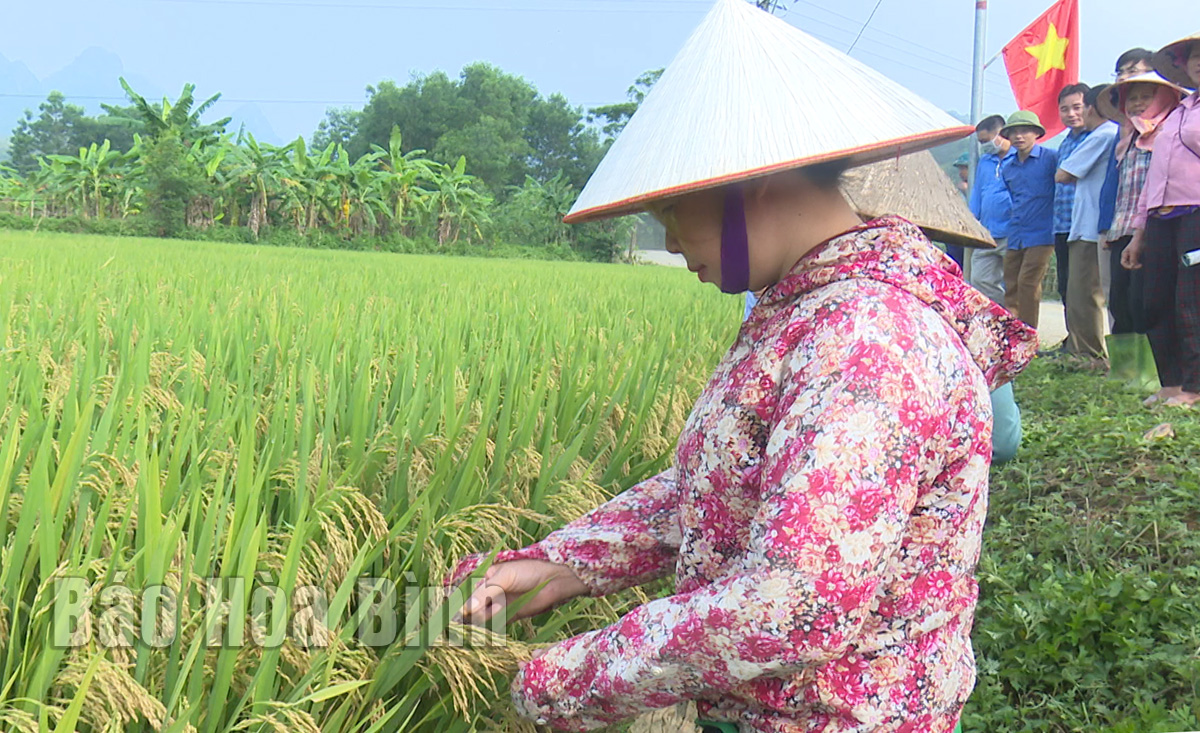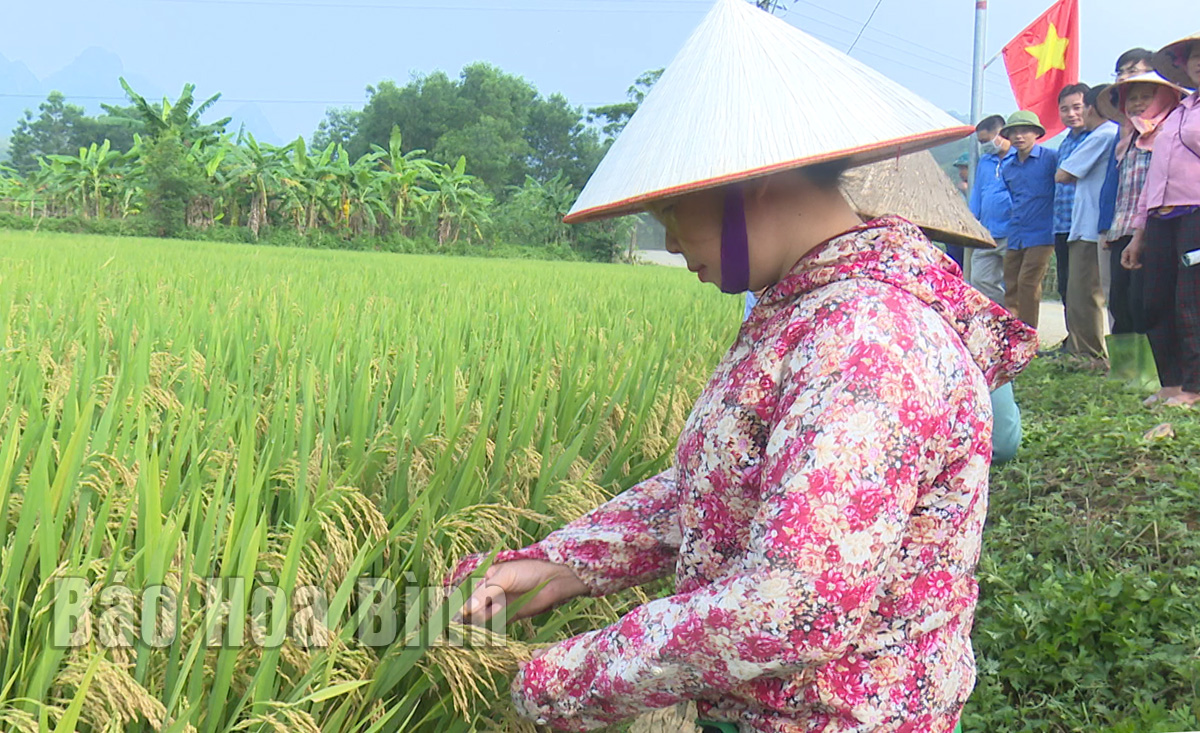
(HBO) - Unlike previous years, in the spring crop of 2023, the family of Bui Thi
Phuc in Mo hamlet, Kim Lap commune, Kim Boi district has bravely switched to
planting the new Thien uu 8 rice variety on a site of over 2,800sq.m. Right from
the beginning of the crop, Phuc's family was provided with the rice variety and
guided through each stage of sowing, planting and caring by staff from the
Vietnam National Seed Group (Vinaseed). With a growth period of 125 - 130 days,
disease resistance, and a yield of over 7 tonnes per ha, the family earned over 32.7
million VND (1,420 USD) per ha after deducting production costs.
Residents of Mo hamlet, Kim Lap commune, Kim Boi district visit a new Thien uu 8 rice variety planting model
In the Mo Khoac area, Bo township, the Agricultural Service Centre of Kim Boi district partnered with the Thai Binh Seed Corporation to establish a demonstration model featuring four new-generation rice varieties with high yield and quality. The practical planting process showed that all four rice varieties exhibit excellent pest and disease resistance, wide adaptability, robust tillering, tolerance to dense planting, and produce high-quality, fragrant rice with a tender texture. Notably, all of them yield high economic returns. The lowest yield was above 6.2 tonnes per ha while the highest reaches nearly 7.7 tonnes per ha. The highest economic efficiency reached over 41 million VND per ha.
Recently, Kim Boi district has been actively experimenting and putting high-yield,
high-quality new rice varieties into production. This has led to the formation of key rice cultivation areas, contributing to "opening the way" out of poverty for farmers. Annually, the district collaborates with two major enterprises, Thai Binh Seed Corporation and Vinaseed, to select 5 - 6 new rice varieties for testing on plots exceeding 2 hectares per variety. Nguyen Thi Hoa, Director of the Kim Boi Agricultural Service Centre, affirmed that the centre proactively works with reputable large rice seed producers each year to pilot new rice varieties. In addition to seeking high-yield, high-quality rice
varieties for mass production, they consistently support the local residents by providing them with rice seeds, material costs, fertilisers, and training to improve farming techniques.
At present, with a total planting area of over 3,100ha for the summer-autumn crop and more than 2,400ha for the spring crop, the search for and production of new rice varieties to "open the way" for the Muong Dong residents to escape poverty is indeed essential.
According to data from the Hoa Binh Provincial Party Committee, the industrial production index for the first six months of 2025 is estimated to have increased by 20% compared to the same period last year. This marks the highest year-on-year growth rate for this period since 2020.
In the first six months of 2025, Hoa Binh province’s export turnover was estimated at 1.145 billion USD, marking an 18.11% increase compared to the same period in 2024. Import turnover was estimated at $ 804 million, a 17.15% increase, which helped the province maintain a positive trade balance.
The lives of the ethnic minority farmers in Tan Lac district have gradually improved thanks to the new directions in agricultural production. This is a testament to the collective strength fostered through the professional associations and groups implemented by various levels of the district’s Farmers’ Union.
With the motto the "product quality comes first,” after nearly one year of establishment and operation, Muong village’s Clean Food Agricultural and Commercial Cooperative, located in Cau Hamlet, Hung Son Commune (Kim Boi district), has launched reputable, high-quality agricultural products to the market that are well-received by consumers. The products such as Muong village’s pork sausage, salt-cured chicken, and salt-cured pork hocks have gradually carved out a place in the market and they are on the path to obtaining the OCOP certification.
In the past, the phrase "bumper harvest, rock-bottom prices" was a familiar refrain for Vietnamese farmers engaged in fragmented, small-scale agriculture. But today, a new spirit is emerging across rural areas of Hoa Binh province - one of collaboration, organisation, and collective economic models that provide a stable foundation for production.
Maintaining growing area codes and packing facility codes in accordance with regulations is a mandatory requirement for agricultural products to be eligible for export. Recently, the Department of Agriculture and Environment of Hoa Binh province has intensified technical supervision of designated farming areas and packing facilities to safeguard the "green passport" that enables its products to access international markets.



